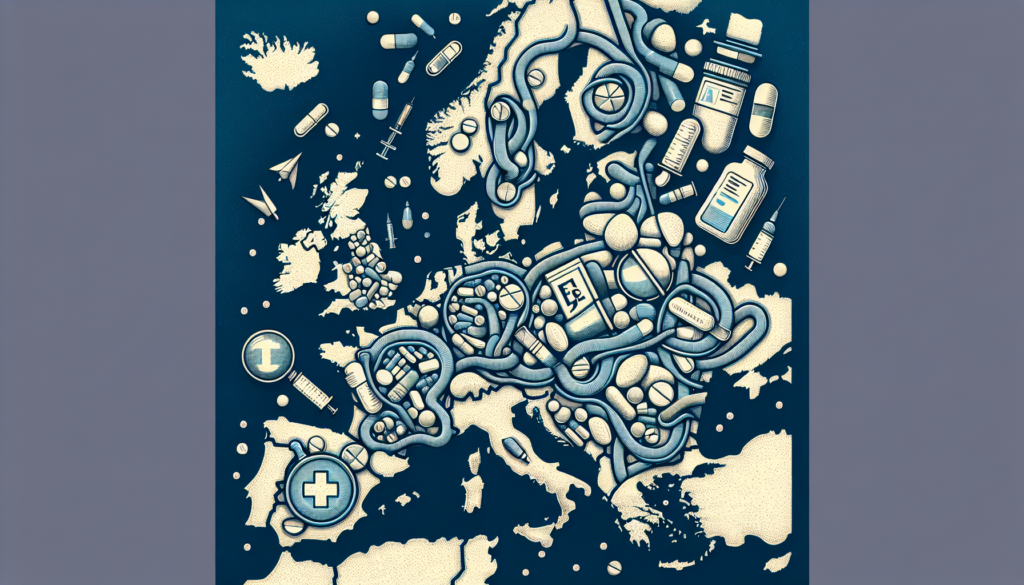Understanding Cross-Border Prescriptions in Europe
The landscape of healthcare in Europe offers unique opportunities and challenges, especially when it comes to cross-border prescriptions. With the freedom of movement within the European Union (EU), patients may find themselves in situations where they need to have their prescriptions filled in a different country. This blog post delves into the intricacies of cross-border prescriptions in Europe, offering insights into regulations, processes, and patient rights.
The EU Directive on Cross-Border Healthcare
The European Union has established frameworks to facilitate cross-border healthcare, primarily through the Directive 2011/24/EU. This directive aims to ensure the provision of safe and good-quality healthcare services across member states, including access to cross-border prescriptions.
Key Provisions of the Directive
Some of the major provisions include:
- Patients’ rights to seek healthcare in other EU countries.
- Reimbursement guidelines for healthcare received abroad, ensuring equivalence as if the treatment was in the patient’s home country.
- Recognition and acceptance of prescriptions issued in another EU country, albeit contingent on certain specifications being met.
Impact on Cross-Border Prescriptions
The directive has enhanced patients’ ability to have prescriptions fulfilled across borders. However, it also requires patients to understand the varying requirements that different countries may have regarding prescription validity and medication labeling.
Challenges in Fulfilling Cross-Border Prescriptions
Despite the directive, patients may encounter several obstacles when trying to fulfill prescriptions in another European country. Understanding these challenges can help in navigating them more effectively.
Prescription Validity and Language Barriers
- Prescription Validity: Not all medications prescribed in one country may be directly available or legal in another.
- Language Barriers: Prescriptions need to be clearly understood by pharmacists, making language a potential barrier. In some cases, translations may be required.
Regulatory Differences Among Countries
Each country may have its own set of regulations regarding medication dispensation which could affect how cross-border prescriptions are handled. Patients should be informed of:
- Distinct pharmaceutical laws that may not align perfectly across borders.
- Diverse labeling and packaging standards.
- Varying standards for generic substitutions.
Opportunities for Patients
Despite these challenges, there are numerous opportunities for patients who seek to leverage cross-border healthcare options.
Access to Different Medication Options
Patients might have access to medications not available in their home country, which is especially important when specific drugs are in shortage or unavailable locally.
Cost Considerations
- Some countries may offer lower prices for medications, which can benefit patients on specific therapies.
- Insurance and reimbursement processes can be leveraged to minimize out-of-pocket expenses, although familiarity with respective national procedures is crucial.
Practical Tips for Patients
Here are some practical tips for patients seeking to benefit from cross-border prescriptions:
- Documentation: Ensure you carry all necessary prescription documents, medical records, and identification when traveling.
- Consultation: Consult with healthcare providers about potential constraints and options available in your destination country.
- Legal Considerations: Familiarize yourself with the legal status of your medication in the destination country.
Summary
In summary, fulfilling cross-border prescriptions in Europe requires understanding the European Union’s healthcare directives, being aware of national variations in pharmaceutical regulations, and knowing the opportunities available for better and sometimes more affordable treatment options. By preparing adequately and being informed, patients can effectively navigate the challenges of cross-border prescriptions in Europe, ensuring they receive safe and timely healthcare services. Remember, this website serves as an informational resource and should not replace professional medical advice.

